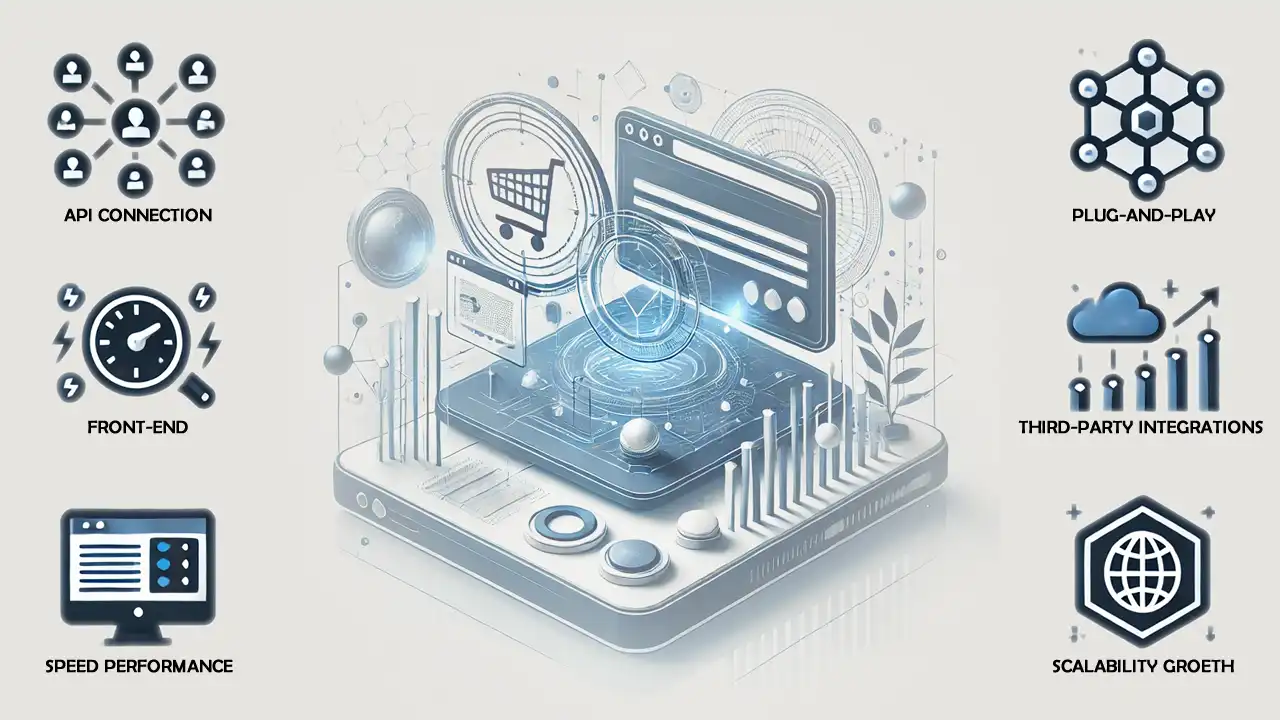Why Headless Commerce is the Future of Online Business
What is Headless Commerce and Why Does It Matter?
Headless commerce is a modern e-commerce architecture that separates the front-end and back-end, enabling better customization, scalability, and omnichannel experiences.
Unlike traditional monolithic e-commerce platforms, where design and functionality are tightly linked, headless commerce allows brands to enhance site performance and integrate advanced tools effortlessly.
Headless Commerce Impact on Business Performance
Why Businesses Are Adopting Headless Commerce
More brands are switching to headless commerce because it offers:
- Faster site speed, improving conversions and user experience. Platforms like Vercel and Netlify optimize front-end delivery for seamless performance.
- Seamless omnichannel integration across web, mobile, and IoT.
- Flexible API integrations with payment gateways, CRMs, and personalization tools. Services like Commerce Layer and Stripe streamline back-end processes for headless commerce stores.
- Scalability to support fast-growing e-commerce brands.
Real-World Success Stories: Headless Commerce in Action
Leading brands have achieved remarkable growth by adopting headless commerce:
- Burrow: 30% increase in conversion rates and 50% improvement in site speed.
- LARQ: Achieved a 400% revenue boost with a headless framework.
- K2 Sports: Launched 8 brands and 16 sites in just 9 months.
For businesses looking to implement a headless commerce approach, leveraging tools like Snipcart for cart integration and BigCommerce’s API for scalability can streamline the transition process.
Who Can Benefit the Most from Headless Commerce?
- E-commerce brands aiming for high performance and fast load times.
- Retailers expanding across multiple sales channels.
- Content-driven businesses seeking to integrate immersive shopping experiences.
Best Practices for Implementing
- Engage key decision-makers before transitioning.
- Develop detailed API documentation for smooth execution.
- Use API-driven architecture to enhance business tools and personalization.
Is Headless Commerce the Right Solution for Your Business?
Not every business needs headless commerce. Here’s how to decide:
Headless Commerce is Ideal If:
- You need a scalable and flexible omnichannel experience.
- You want complete front-end customization.
- You rely on API integrations for personalization and automation.
- Your business is rapidly expanding and needs agility.
You May Not Need Headless Commerce If:
- You run a small store with simple needs.
- Your team lacks technical expertise for API management.
- Your current platform provides sufficient built-in features.
For growing brands, headless commerce is a game-changer that enables faster innovation and better customer experiences.
Final Thoughts:
The future of e-commerce is shifting towards headless commerce, empowering brands with better performance, flexibility, and omnichannel experiences.
If your business is ready to move beyond the constraints of traditional e-commerce platforms, headless commerce could be the key to unlocking future growth.
FAQs
Headless commerce is an e-commerce architecture in which the front end (what customers see) is separated from the back end (database, checkout systems, etc.). This allows businesses to customize their shopping experience, integrate third-party tools, and improve site performance.
Businesses are shifting to headless commerce because it offers greater flexibility, improved performance, seamless omnichannel experiences, and effortless integrations with various third-party services.
Headless commerce is ideal for growing e-commerce brands, content-driven businesses, and retailers expanding across multiple sales channels. It provides scalability and customization for companies looking to future-proof their digital presence.




